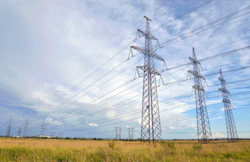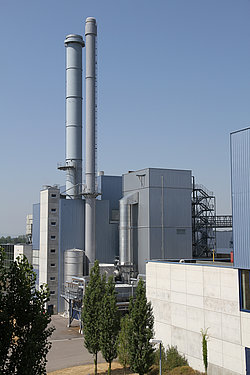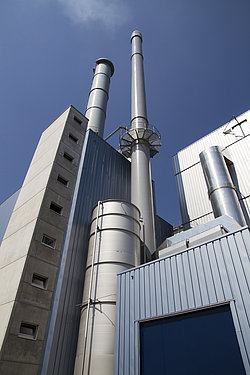


Energy: On the way to a climate-neutral production
Wood is made into paper. The carbon stored in wood remains in the product even after several recycles. Only when non-reusable fibers are finally incinerated or are decomposed in the waste will carbon be released again. This is a climate-neutral cycle.
However, it is not yet possible at this stage to manufacture paper without energy and thus without CO2 emissions. The paper industry needs energy for running its systems – chiefly for removing production water from the paper sheet. Today more than 50% of the required energy comes from regenerative sources and the sector is committed – if for no other than cost reasons - to constantly reducing its energy demand still further. For example, in 1955 specific energy consumption was at some 8,200 kW/d whereas it is today down at approx. 2,600 kWh/d. This is a decrease by 67 %. However, despite all efforts, the paper industry counts among the most energy-intensive industries. In the absence of perequation measures, e.g. in terms of the specific compensating scheme governing power-intensive enterprises under the Renewable Energy Sources Act, the German paper industry would not be internationally competitive.
Nevertheless the sector is looking to the future with optimism. Within the framework of a large-scale collaborative project - the Papermill Model - the paper industry invests substantial own resources in research into CO2 neutral production options.
When we speak of energy consumption we have to make comparisons.
In Germany, production of 200 kg paper – which roughly corresponds to the annual per capita consumption in the EU countries – necessitates an energy input of approx. 560 kWh. This is equivalent to
- the annual power consumption of two PCs with high-speed processor (source: PC Magazine)
- the electricity consumption of a single 60W eco save bulb used in households during 3 ½ years (about 7.5 h burning time/day).
Currently the annual energy demand of data centers in Germany is at 10-15 tetra watt hours (paper industry 19 tetra watt hours). Four medium-sized coal-fired power stations would be needed to cover the energy requirements of these data centers alone. On an international scale, 25 nuclear power plants would be necessary to generate sufficient power for the Internet.
If the cloud services offered worldwide were treated like a nation, they would – with a power demand of 684 billion kWh – take sixth position among international energy consumers behind China, USA, Japan, India and Russia and before Germany, Canada, Brazil, France and Great Britain. (Spiegel online)
Another interesting aspect is the figures of the Bitcoin crypto-currency: meanwhile the worldwide annual electricity consumption of Bitcoin alone comes within the two-digit tetra watt hours range. Bitcoin thus consumes more energy annually than does the whole country of Denmark. (FAZ)